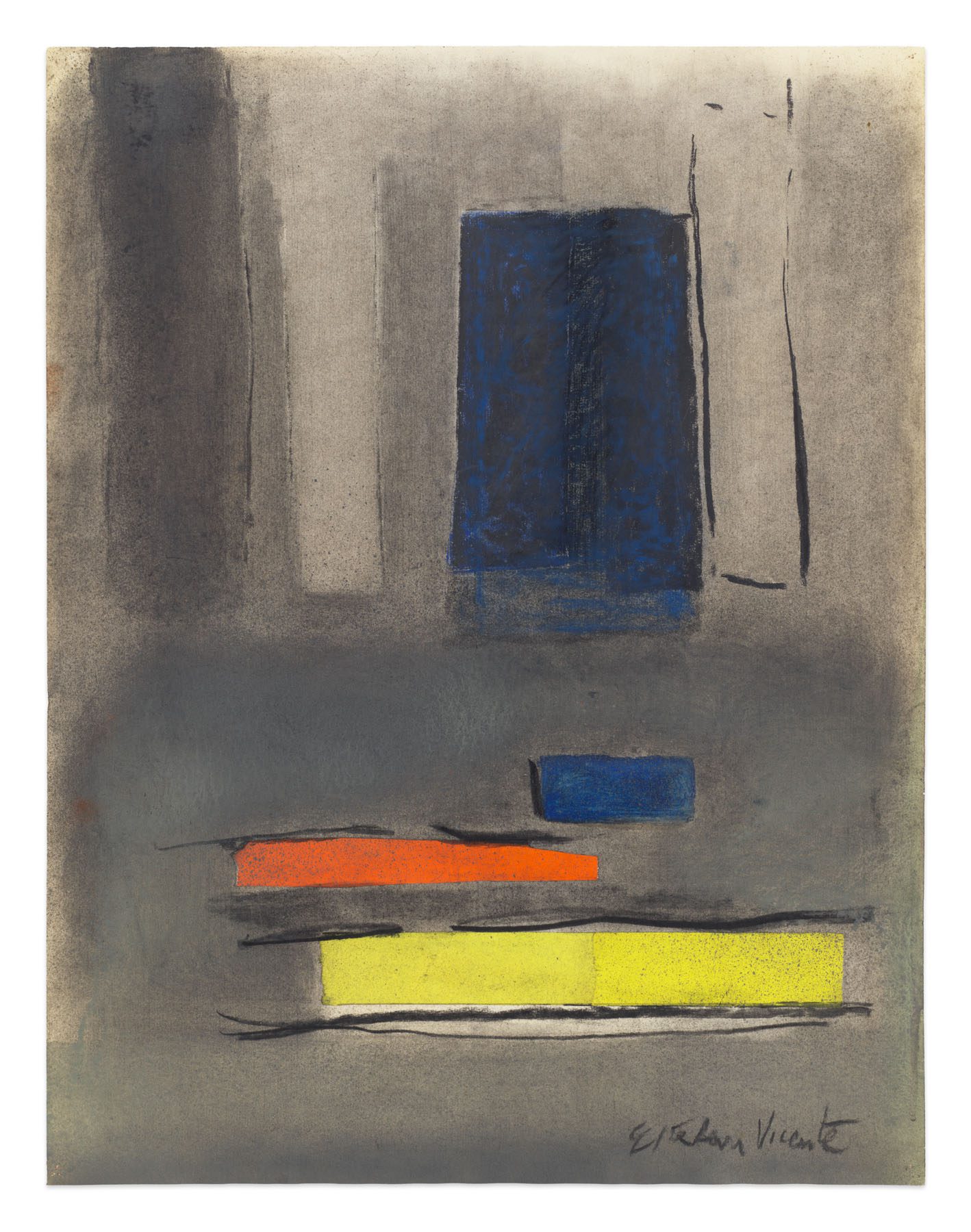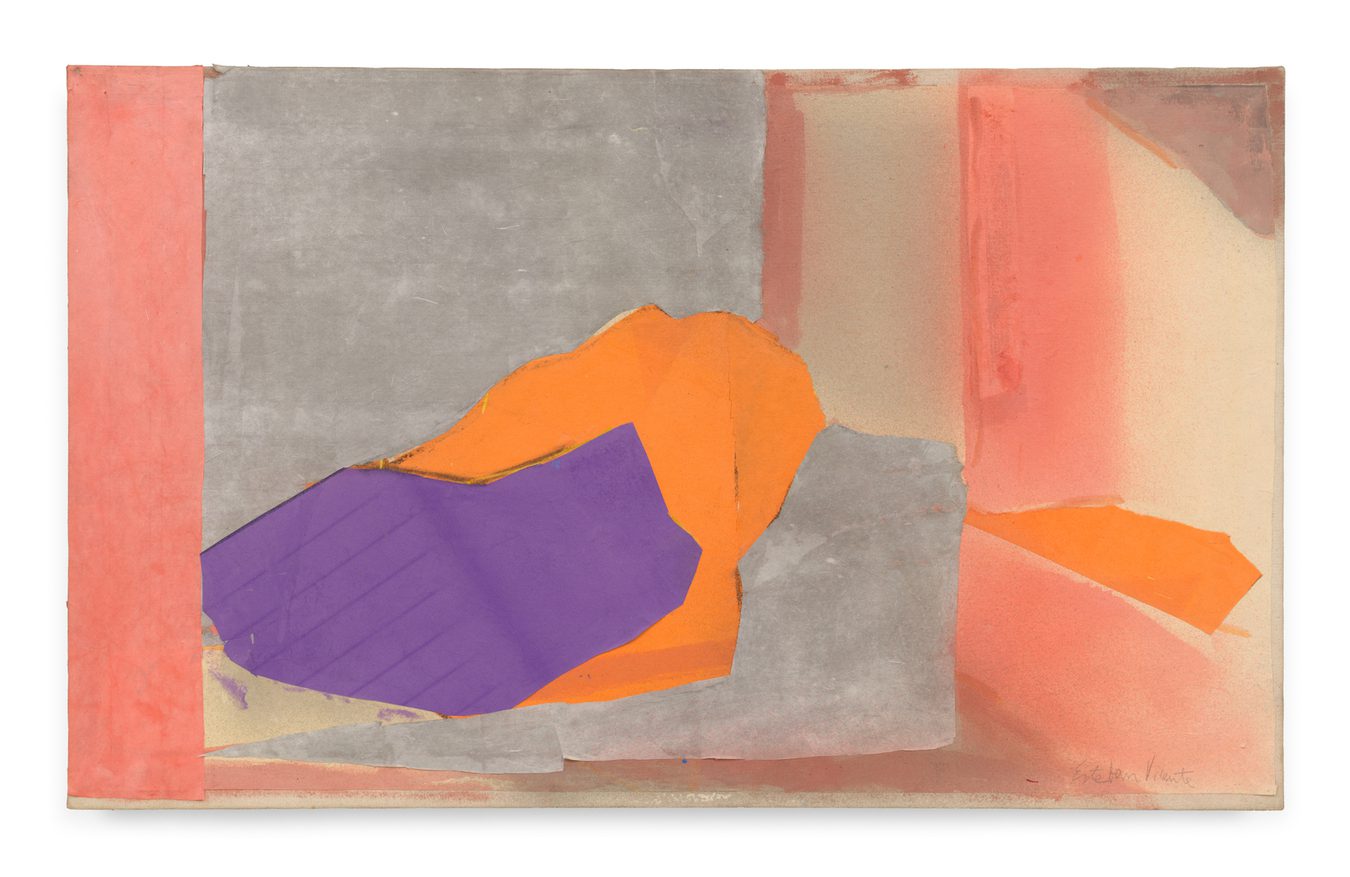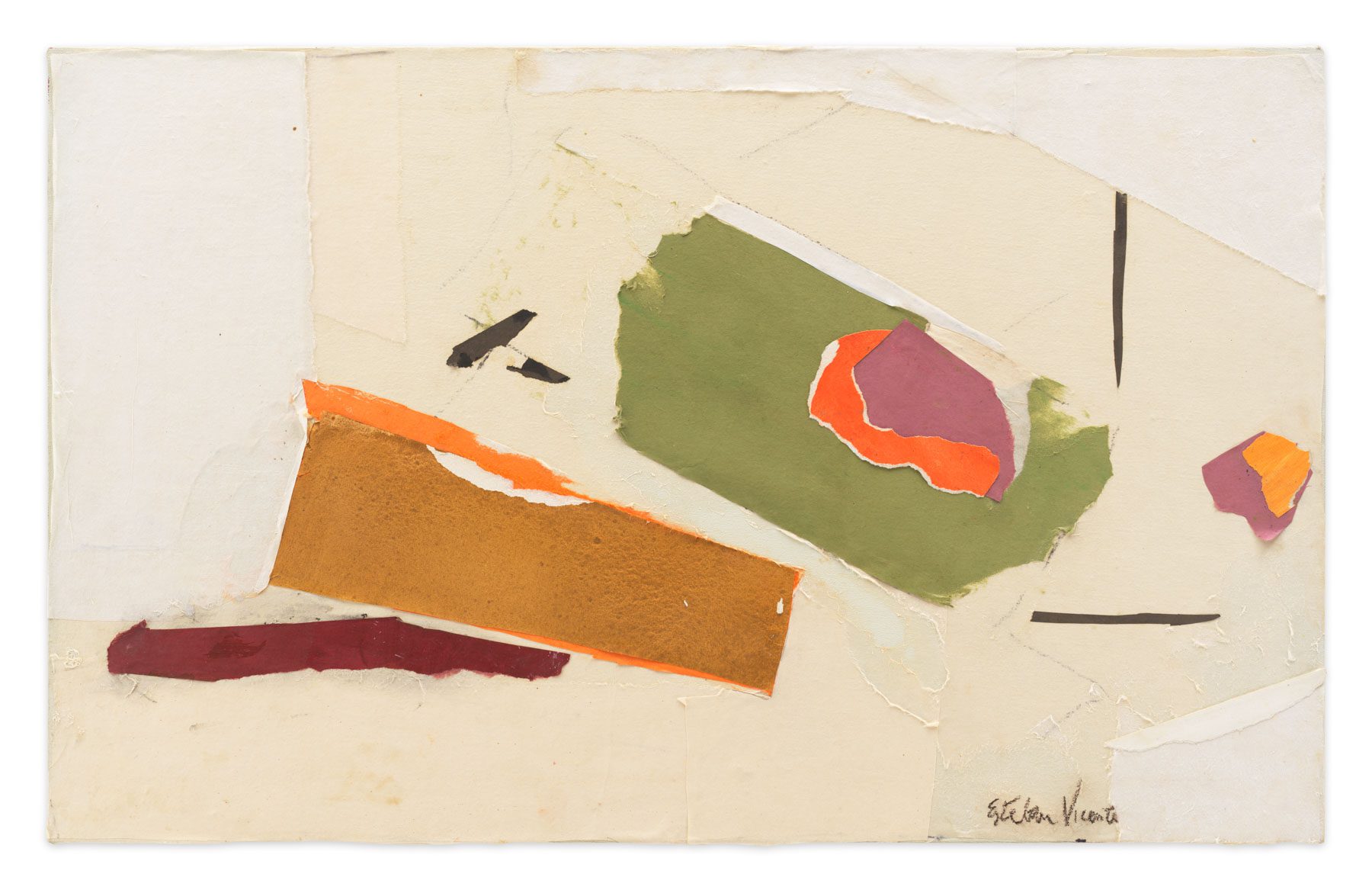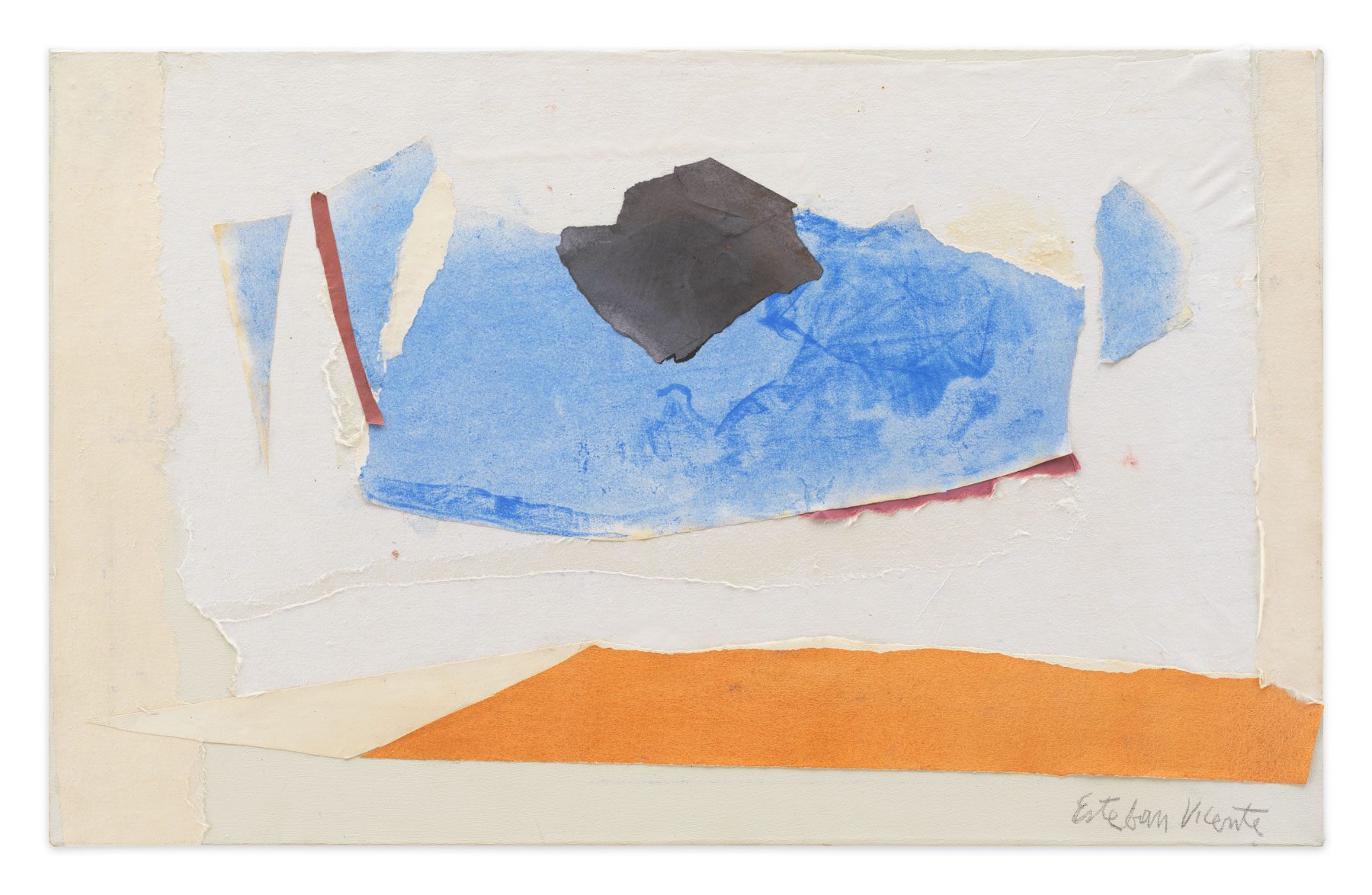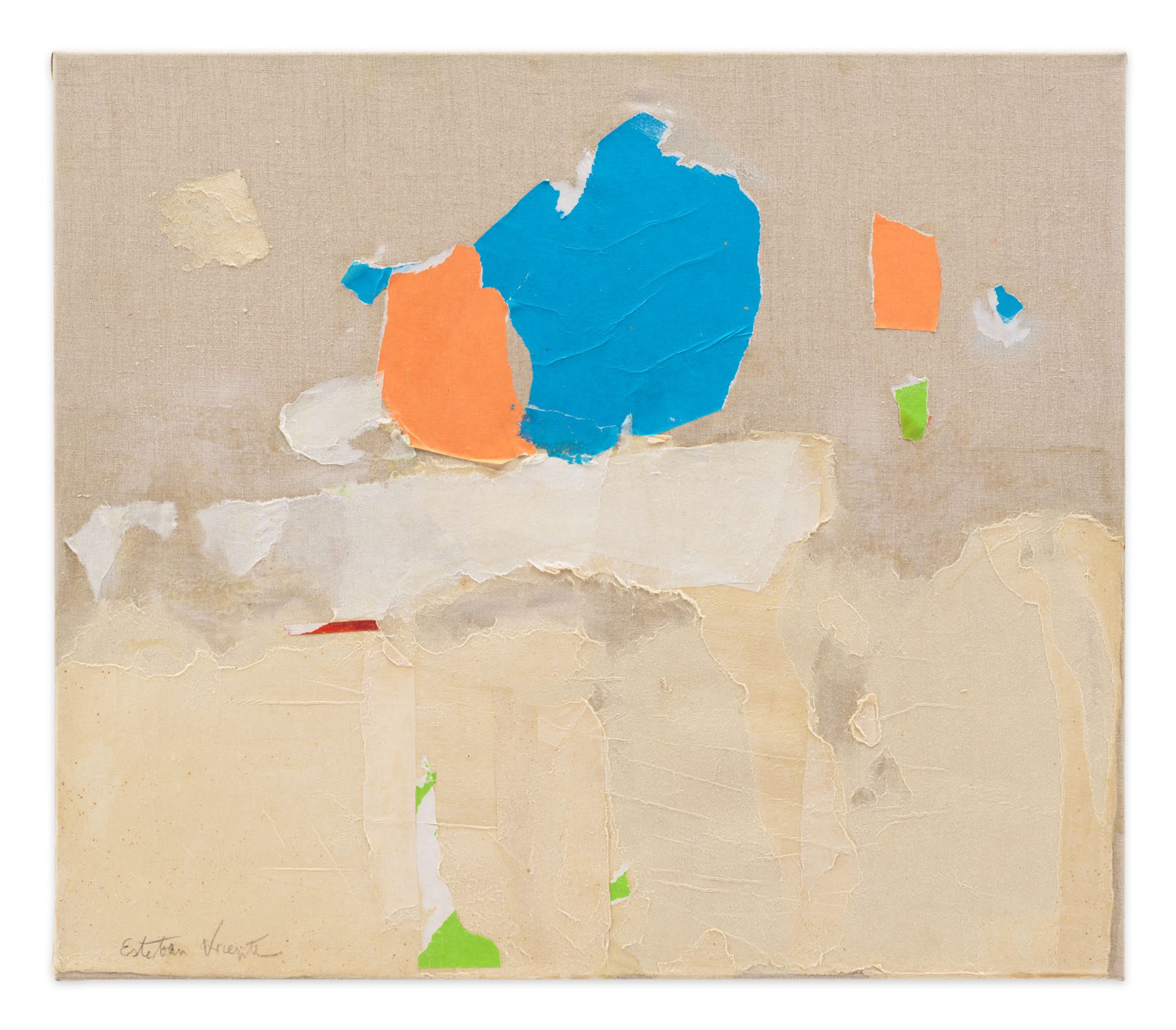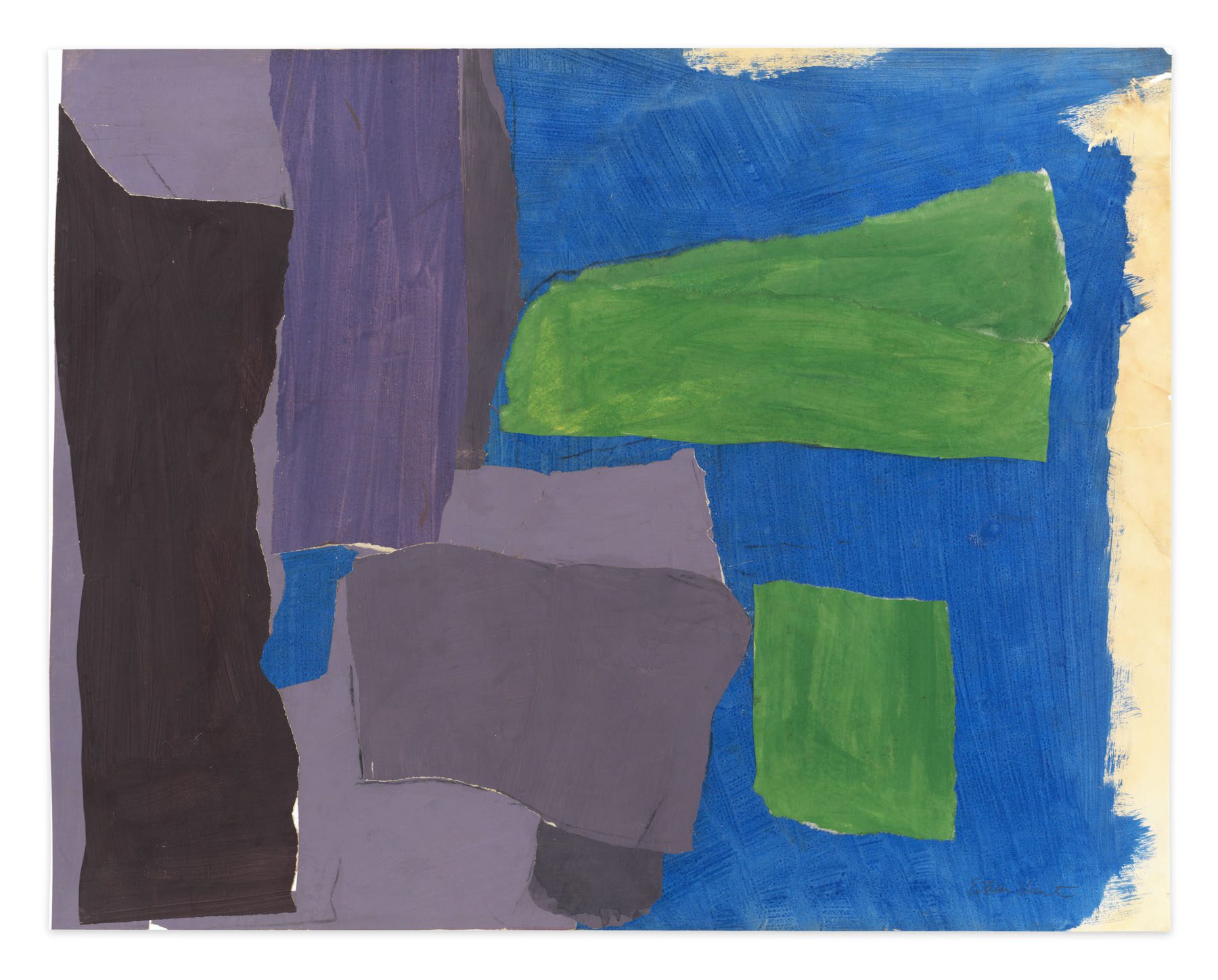Madrid
Cayón is pleased to present, in its first project of 2025—an anniversary year marking the 20th anniversary of the gallery’s opening in Madrid—the work of Esteban Vicente (Turégano, Segovia, 1903 – Long Island, New York, 2001) across its two Madrid spaces.
After previously showcasing his work alongside other Spanish artists (in January 2007, Vibración with Ràfols Casamada and Rodríguez Acosta, and in May 2021, with José Guerrero), this marks the painter’s first solo exhibition at the gallery.
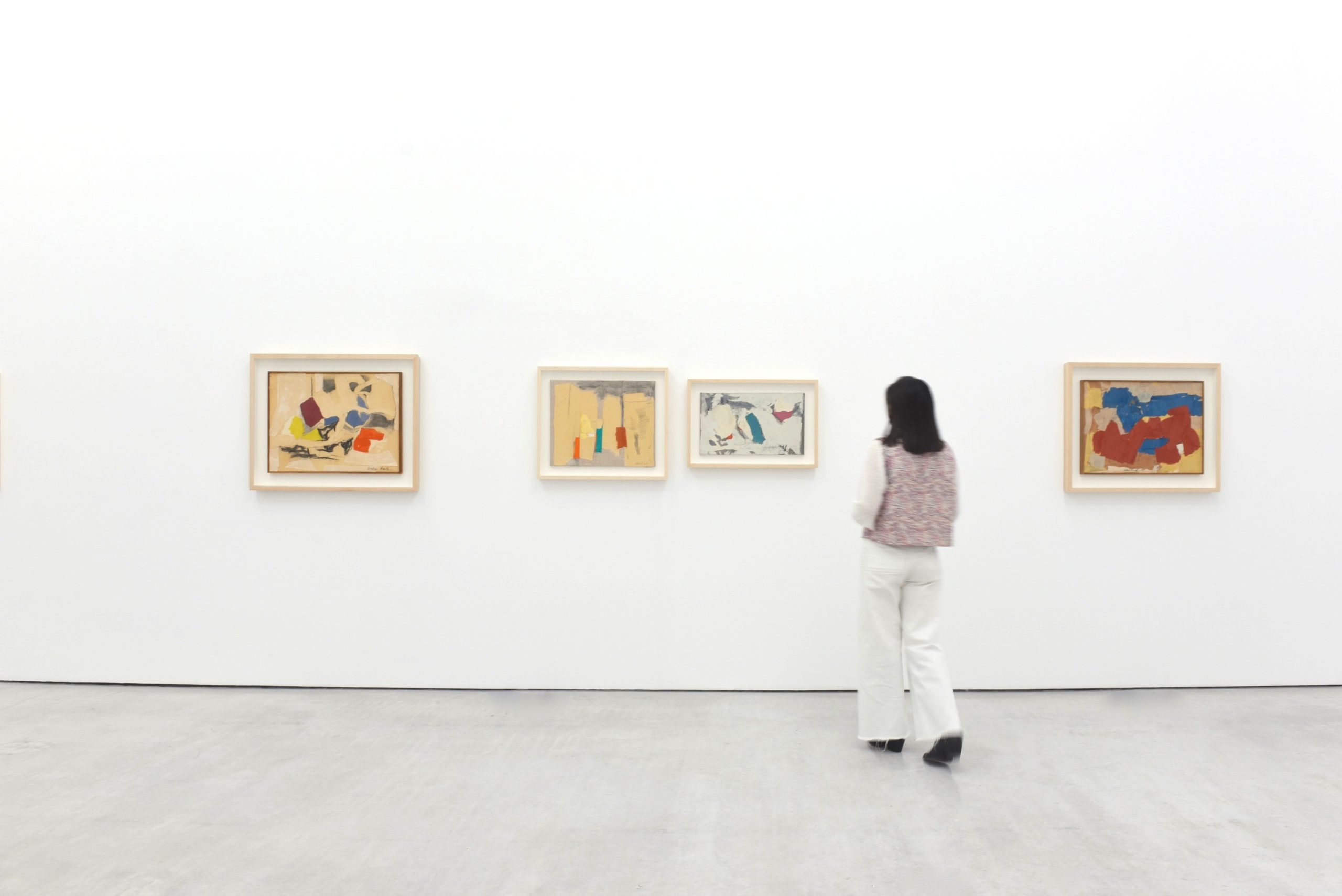
Under the title “Vicente Paints a Collage,” the project, which focuses solely on his collages, draws not only from the apt title of the famous article by Elaine de Kooning (published in issue 52 of Art News in September 1953), which analyzed his early paper assemblages, but also from the analysis presented in the article, highlighting its continued relevance to his work over the course of 10, 20, and more than 30 years.
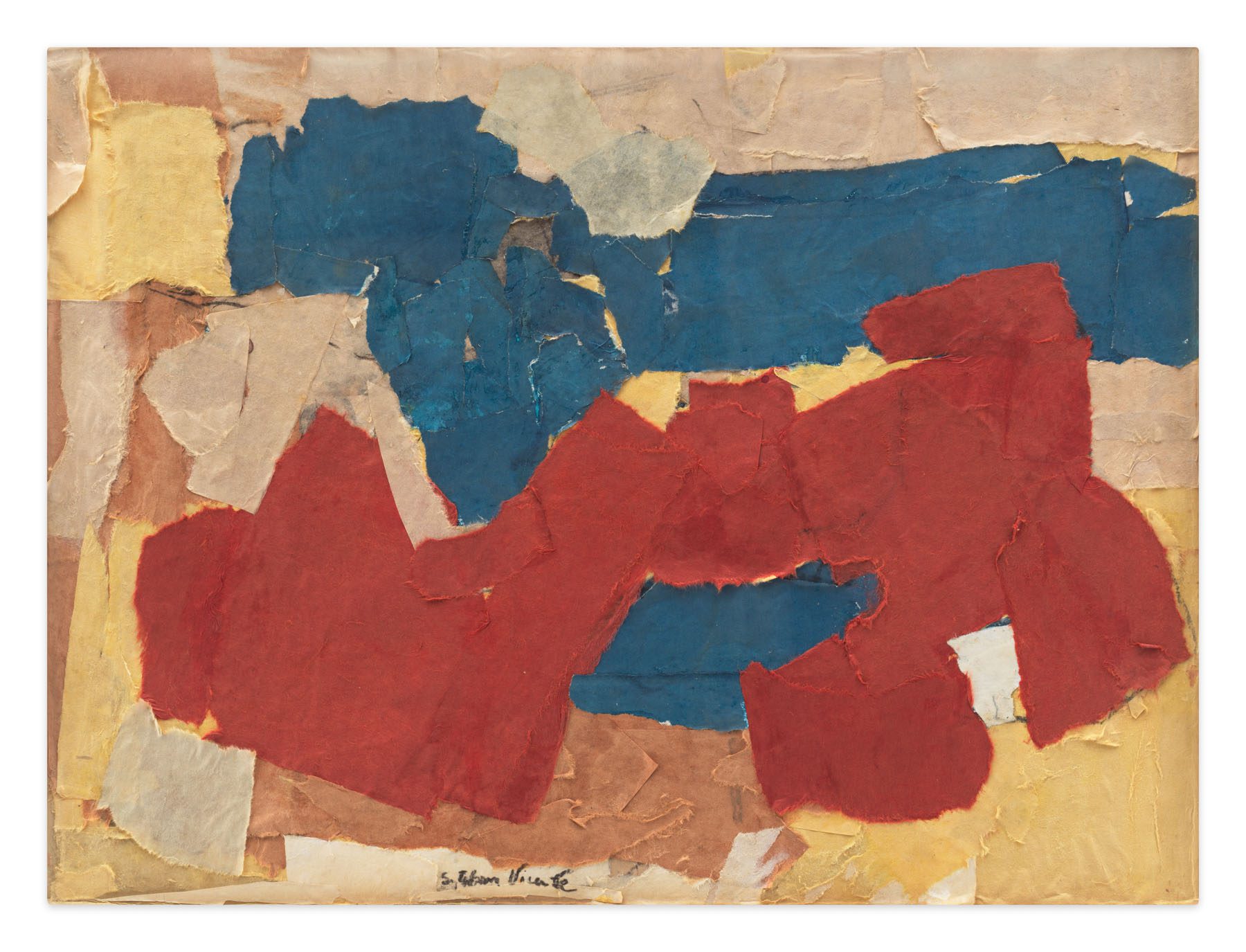
Through 20 collages created between 1962 and 1988, the exhibition delves into the ideas of the early Vicente, as accurately interpreted by de Kooning in her work: that the collage—often considered by many as Esteban Vicente’s major contribution to the art scene of the United States in the 1950s and 1960s, and which he himself, aware of its importance and its decidedly non-marginal character, viewed as “another way of painting, more than a limited and fragmented medium of painting”—is a fundamental and inseparable part of Vicente’s broader body of work.
This is why the insightful title of de Kooning’s essay effectively unites—almost as a synecdoche—the cohesive thinking of Esteban Vicente regarding both cut paper and painted canvas.
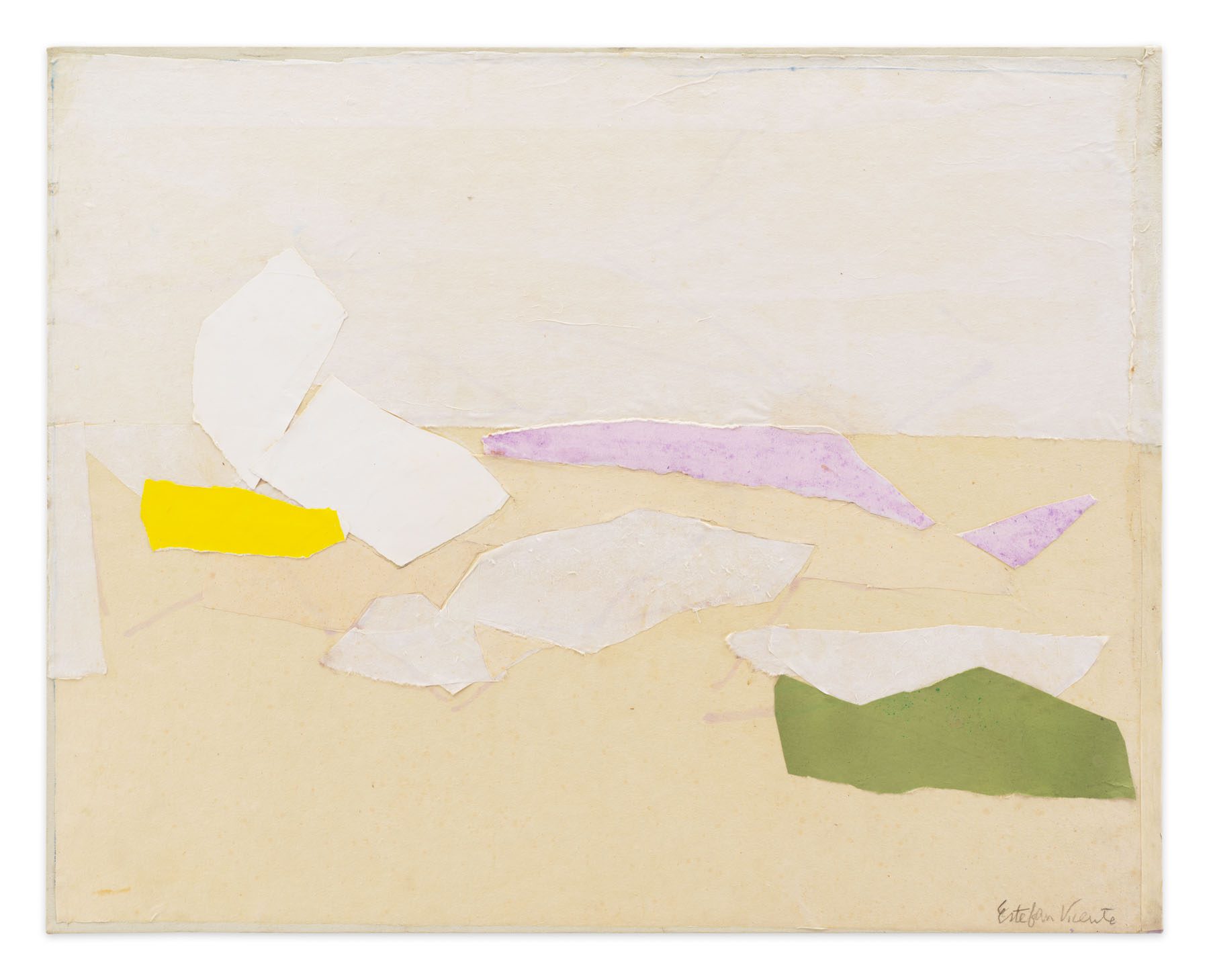
Below are selected excerpts from Elaine de Kooning’s article, “Vicente Paints a Collage,” 1953.
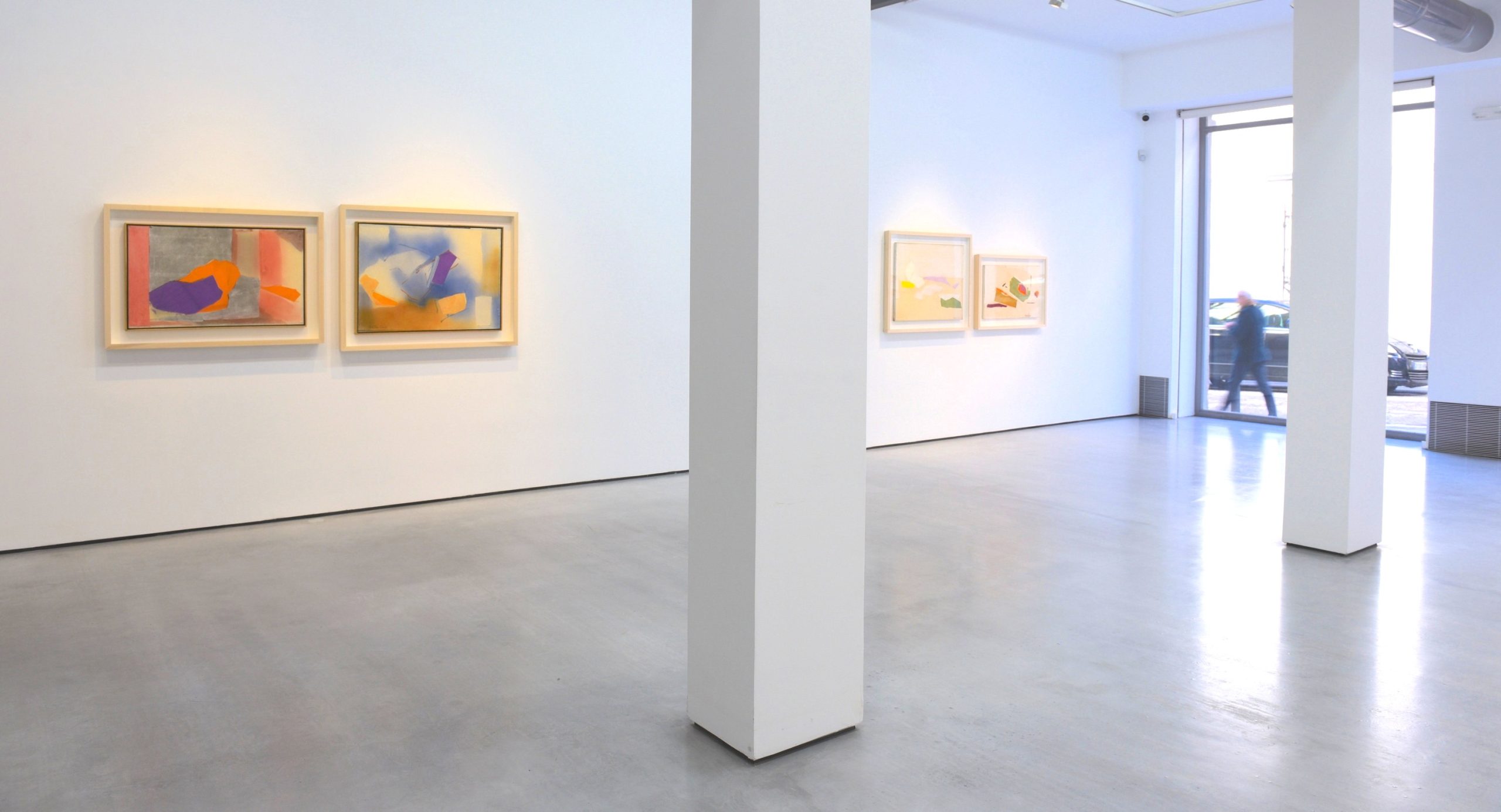
“His collages (…) are covered with patches of highly contrasting colors that create curious effects of volatility and lightness…”
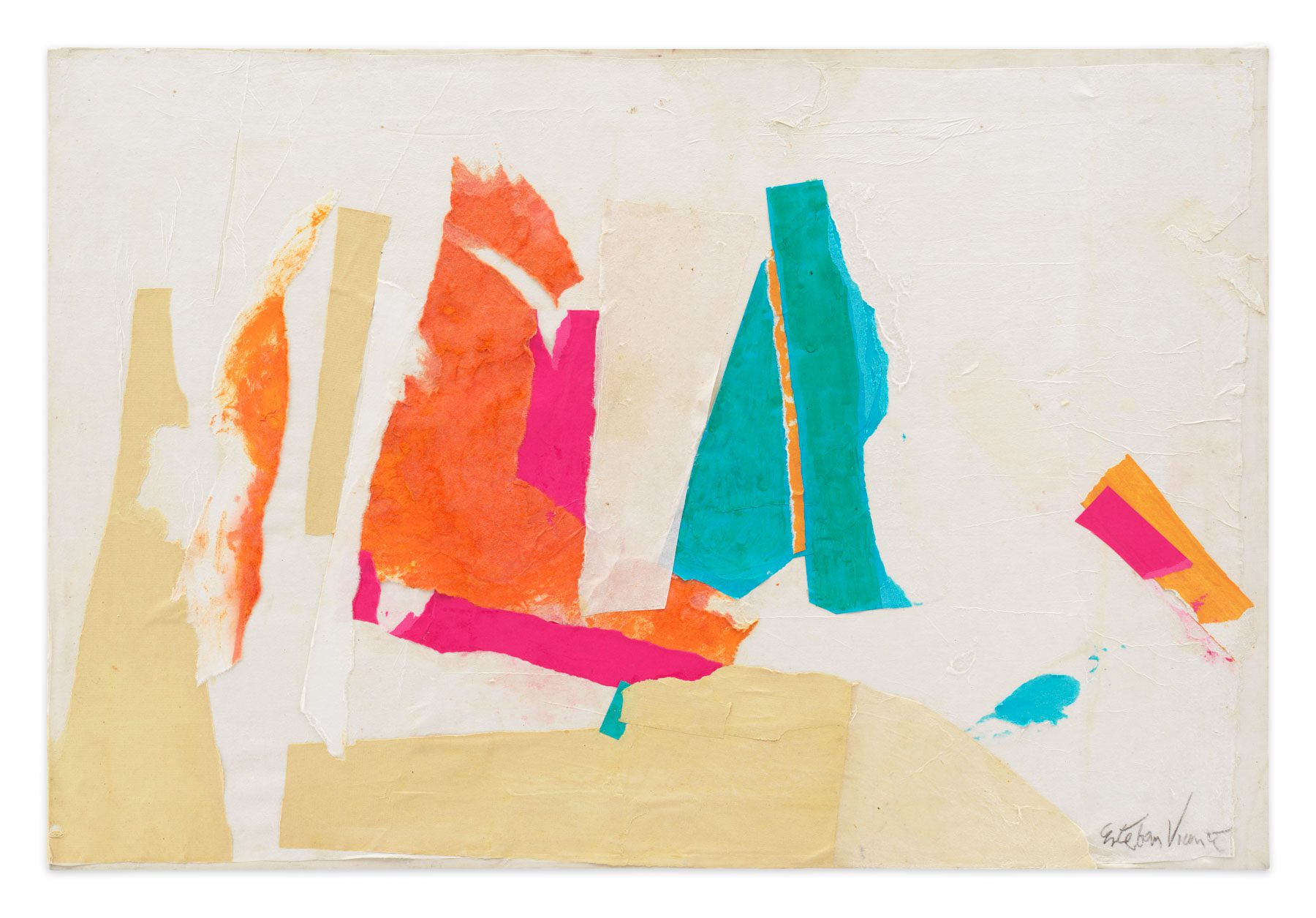
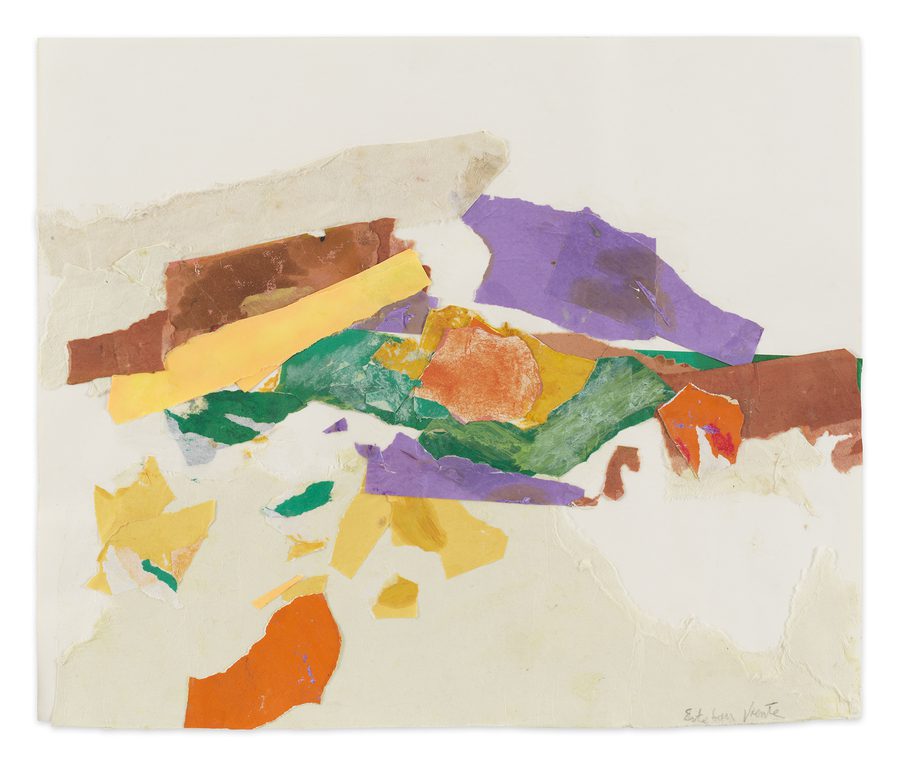
“Initially, he used to glue the paper cutouts carefully, making sure they remained completely flat. Now, however, he allows the edges to remain lifted, to fold, and to wrinkle.”
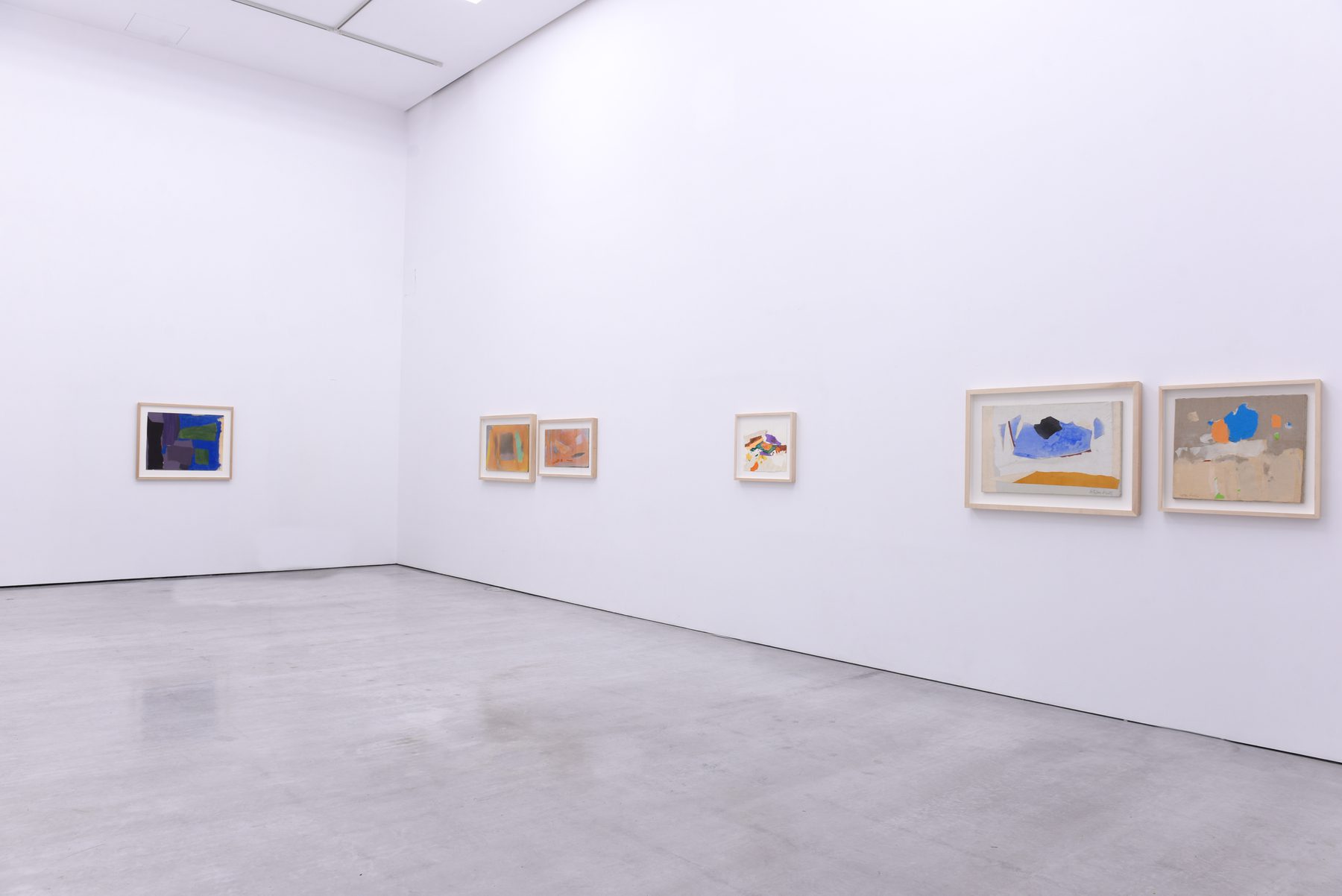

“The pieces of paper that Vicente breaks so irregularly do not retain their smoothness at all; instead, they dissolve into deep perspectives.”
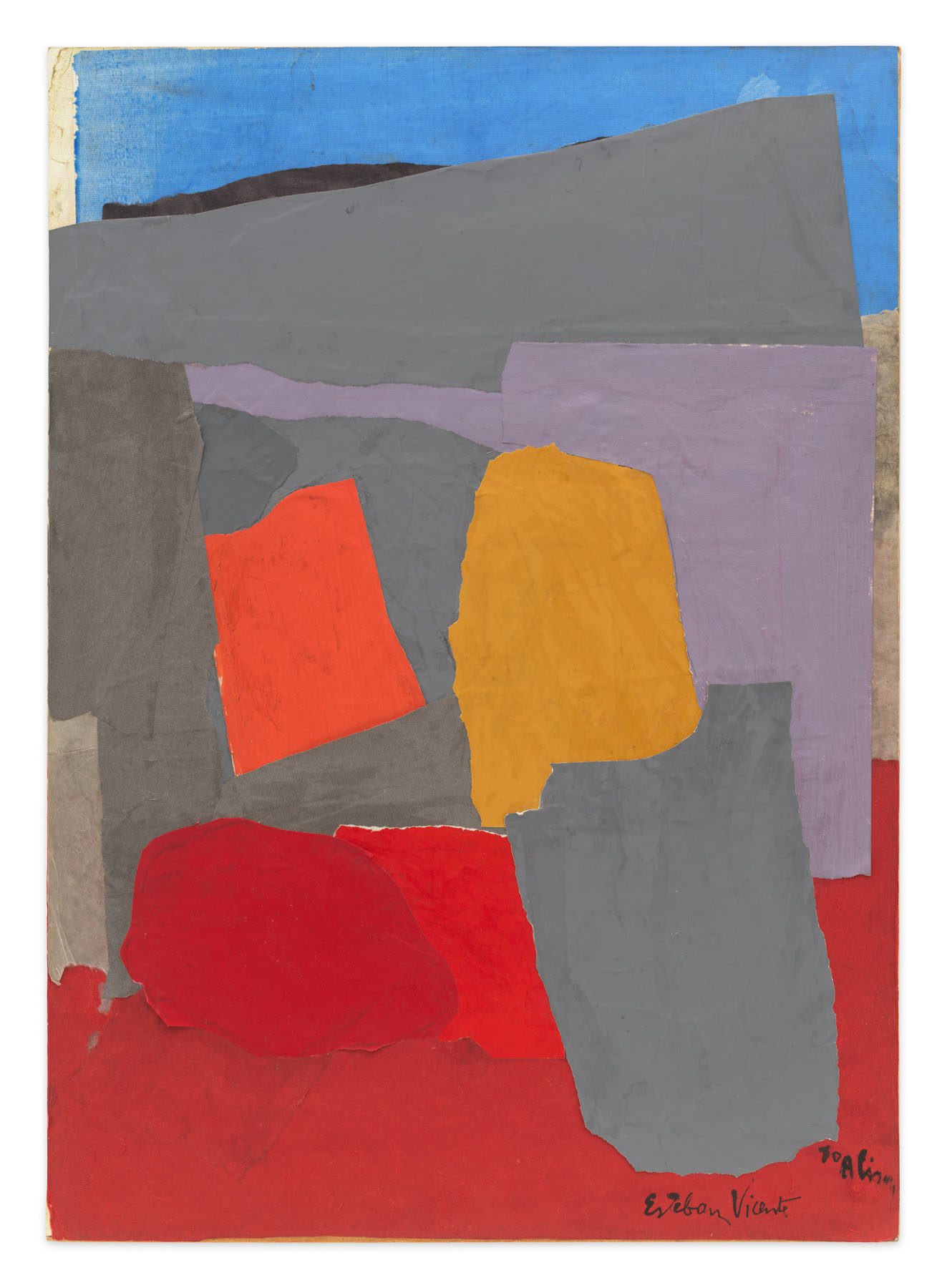

“(…) Vicente’s collages are curiously fluid and dynamic. The color and shapes create a sense of uninterrupted movement, overlapping, shifting positions, extending endlessly, and ignoring the edges of the different pieces of paper.
His technique tends to obscure the fact that the artist is working with paper.”

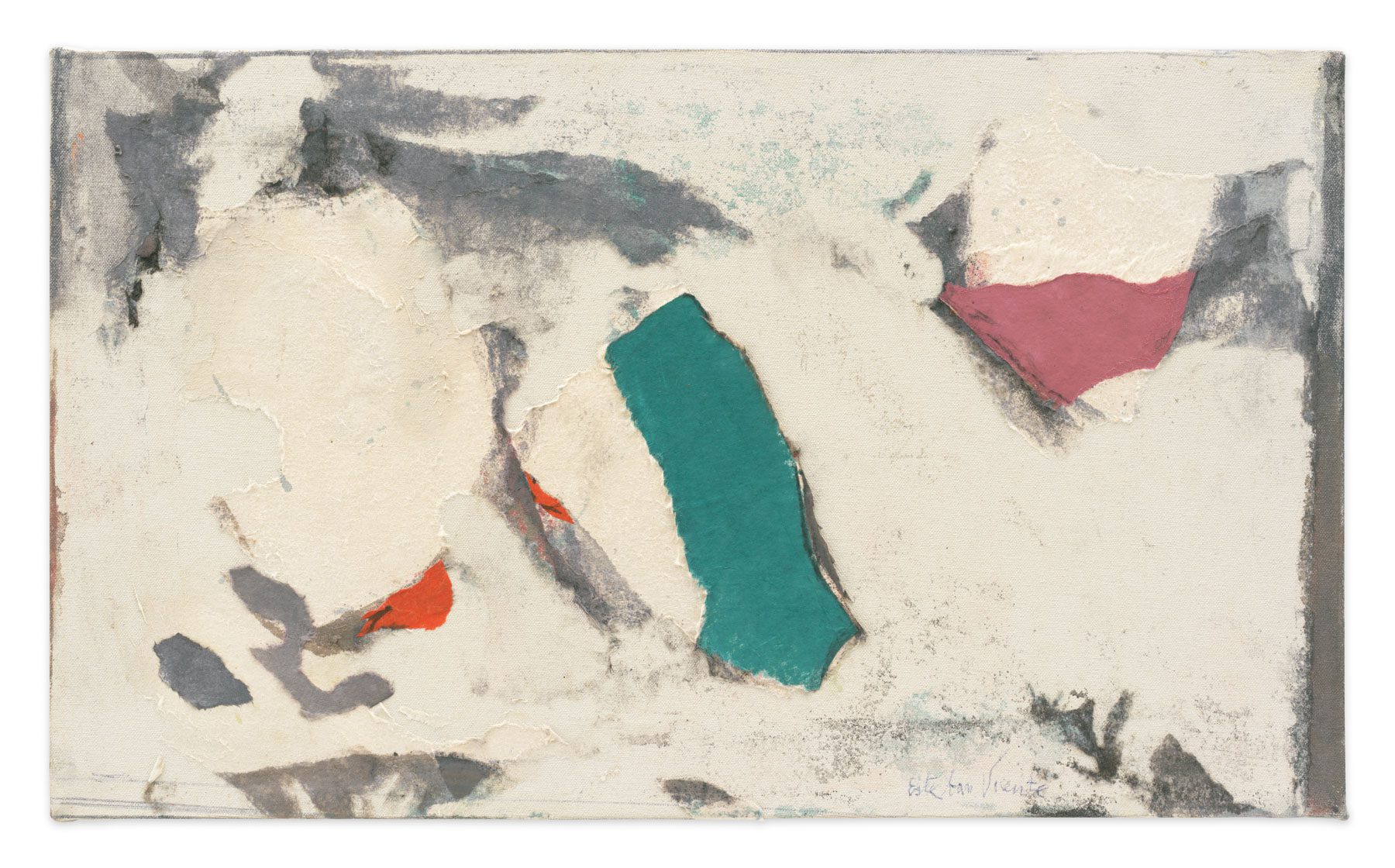
“(…) Esteban begins a collage as he would with a painting: with a charcoal drawing. The paper, like the canvas, is pinned to a three-square-meter wooden board that serves as an easel. (…) He starts applying the colored paper pieces, beginning with the smaller areas and moving to the larger ones, “so that the space isn’t blocked.”
In the same way, the white of the paper sheet, on which the colored paper pieces are pasted, remains, in the end, slightly exposed. “The important thing is to preserve the feeling of white, the open sensation that the white produces.” But, the painter continues, “this is more easily achieved by adding white to any other color.”

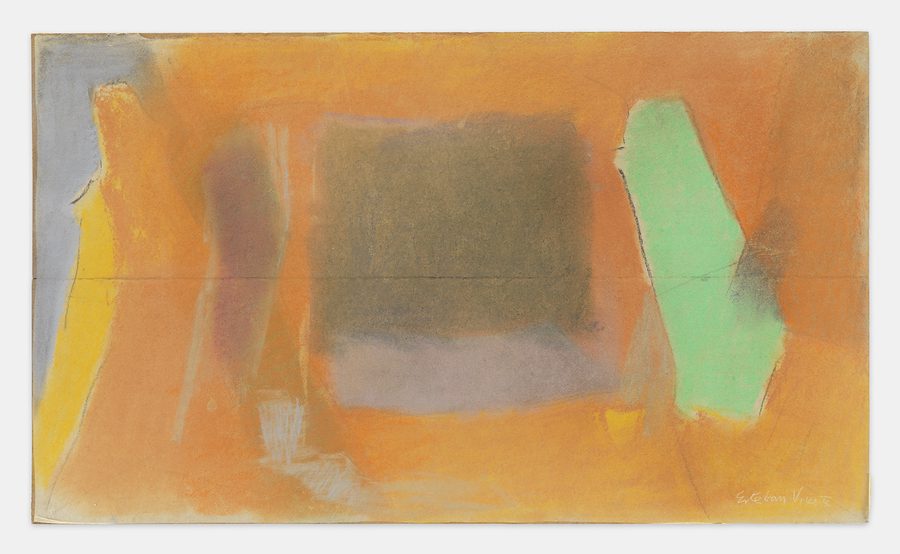
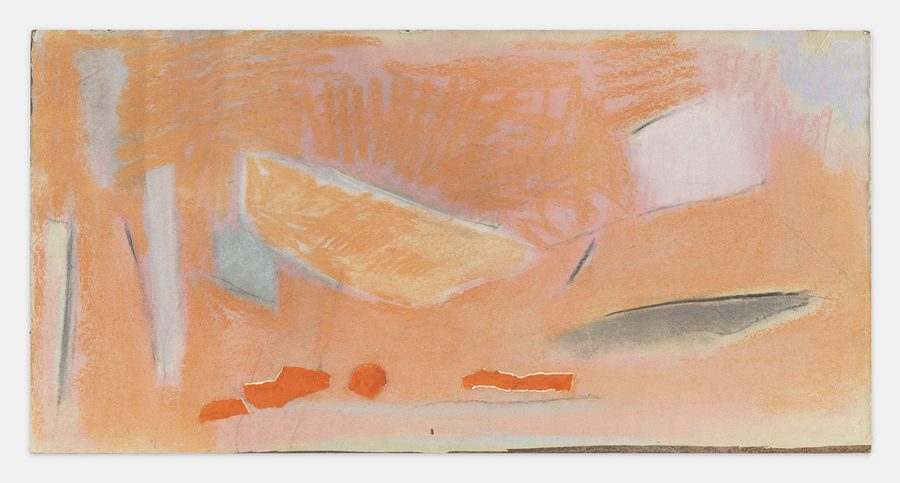
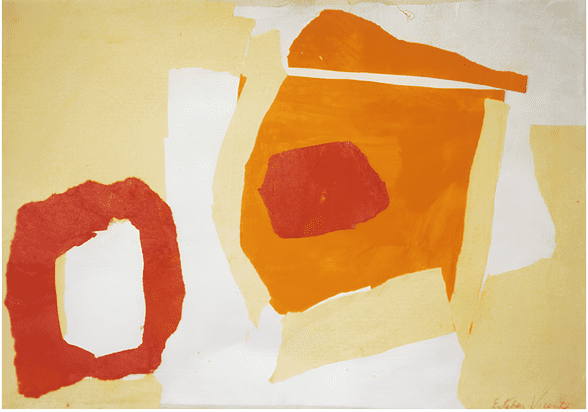
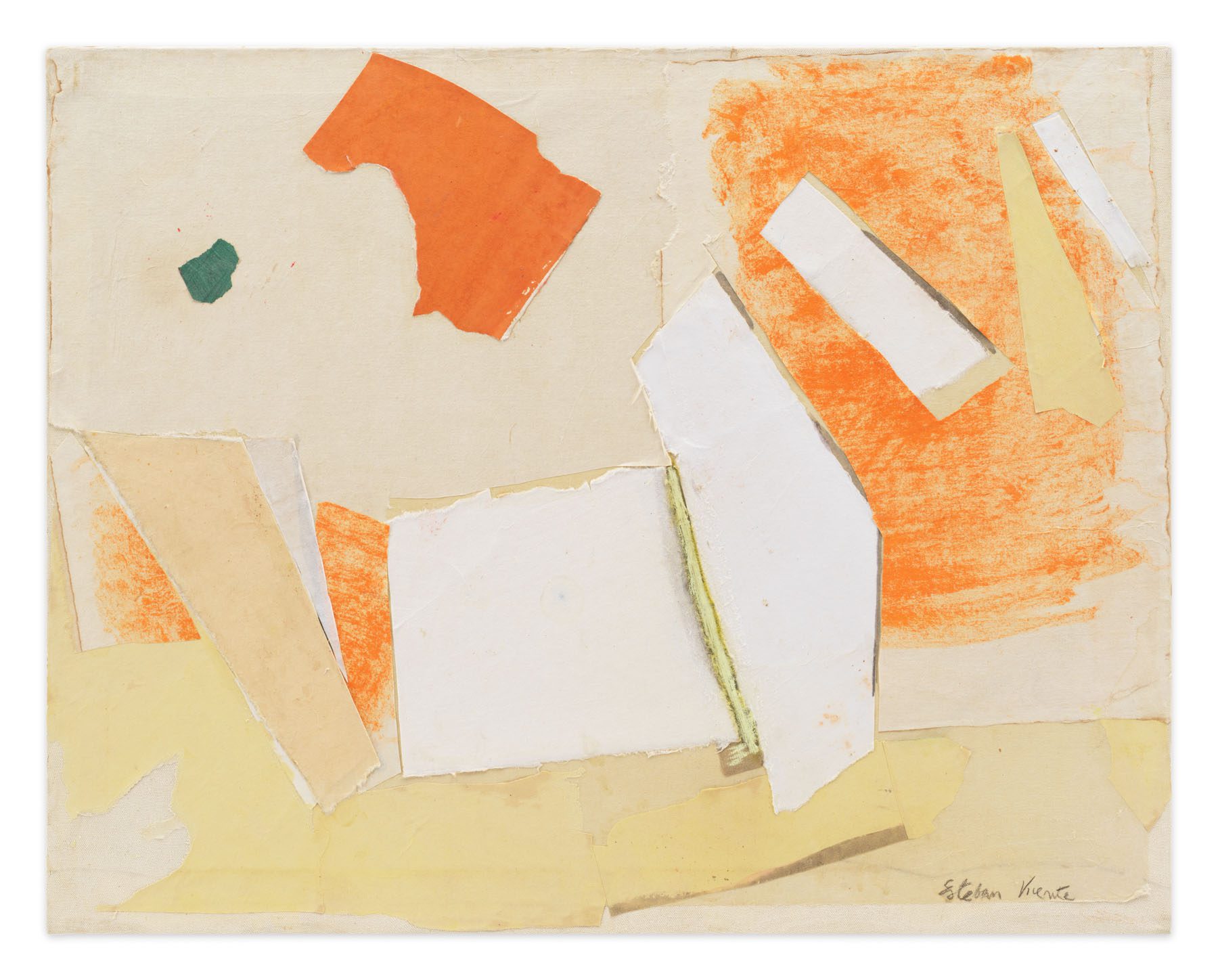
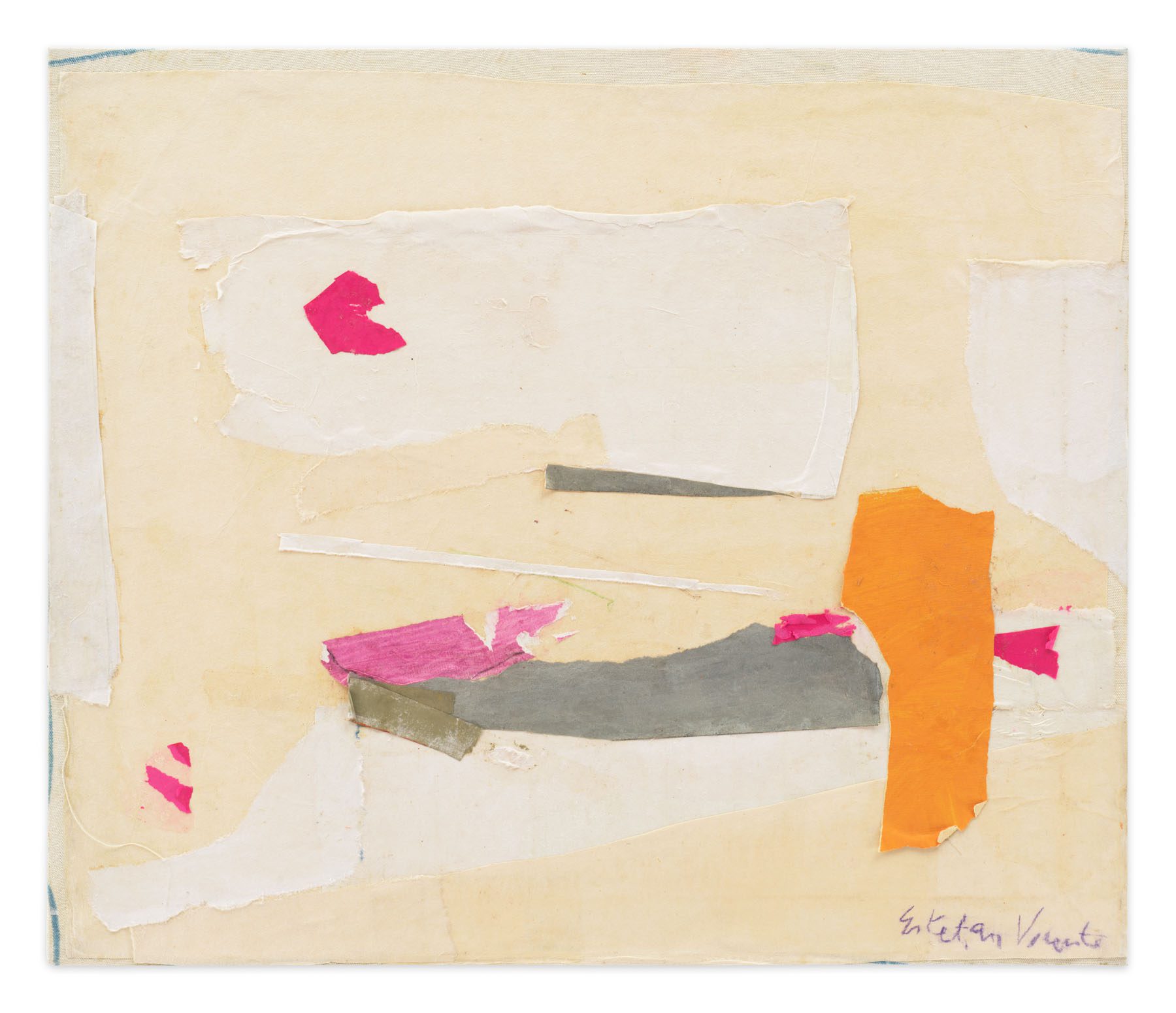
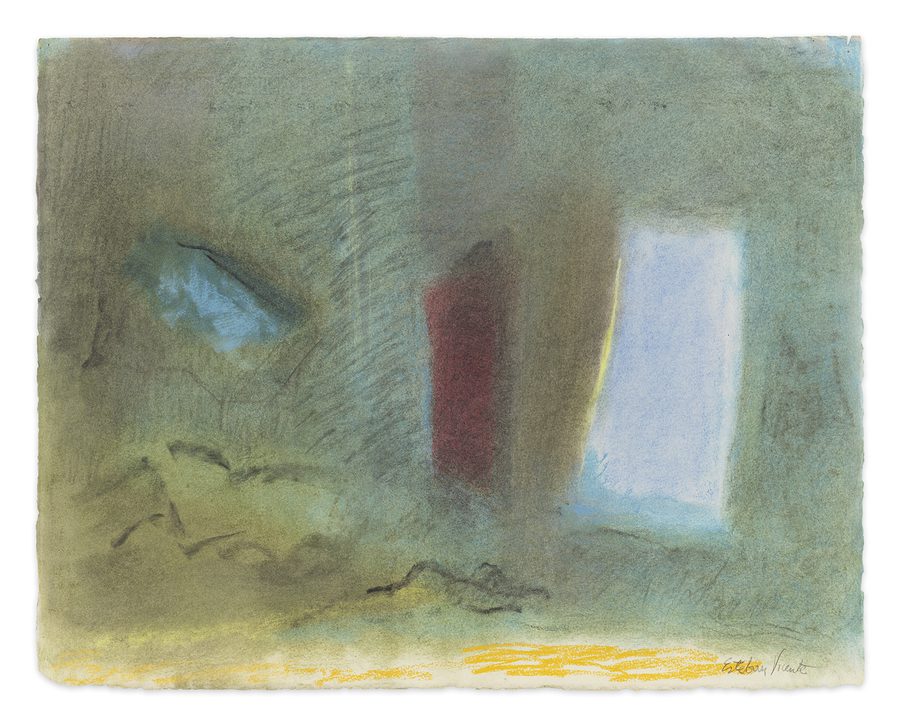
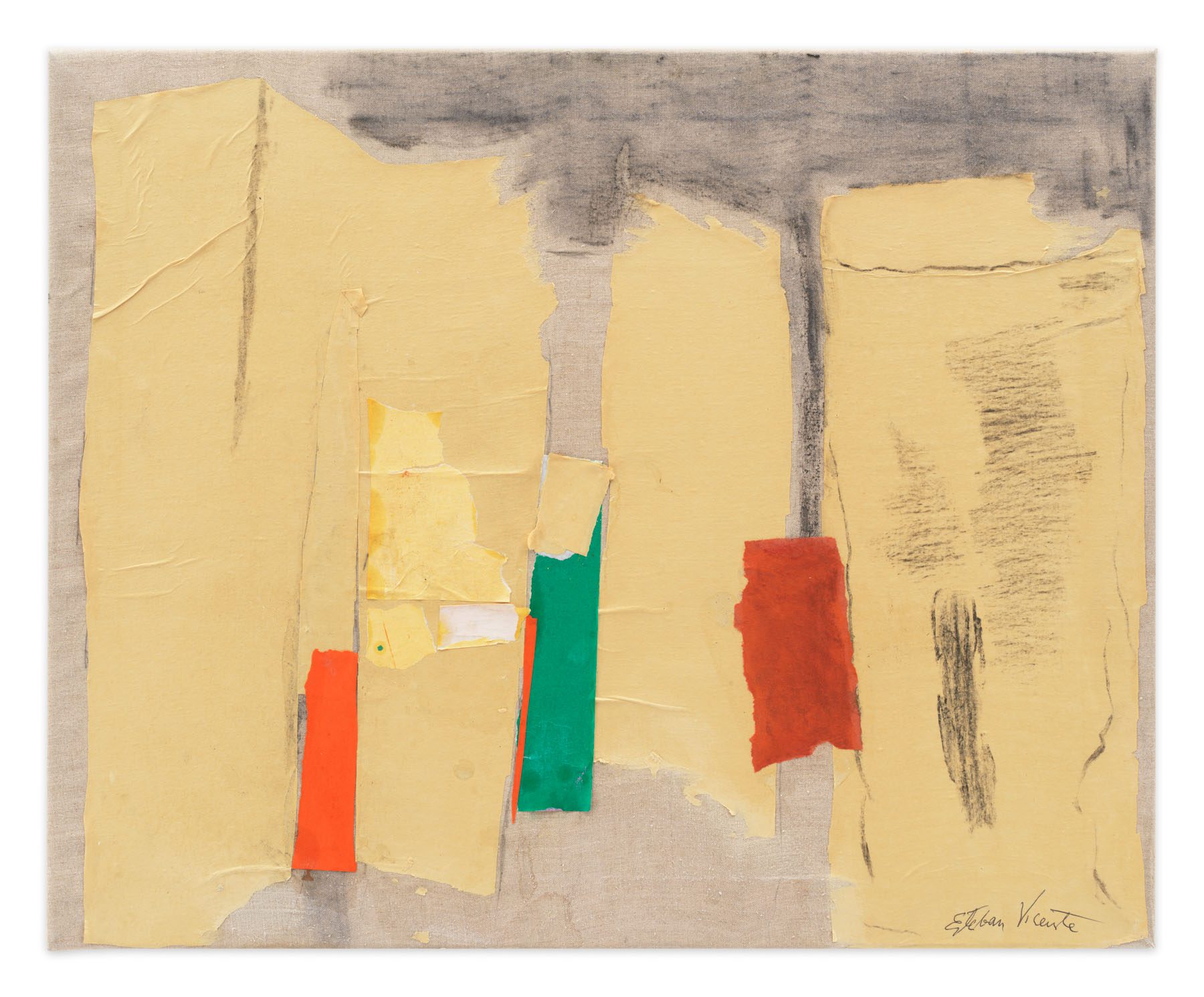
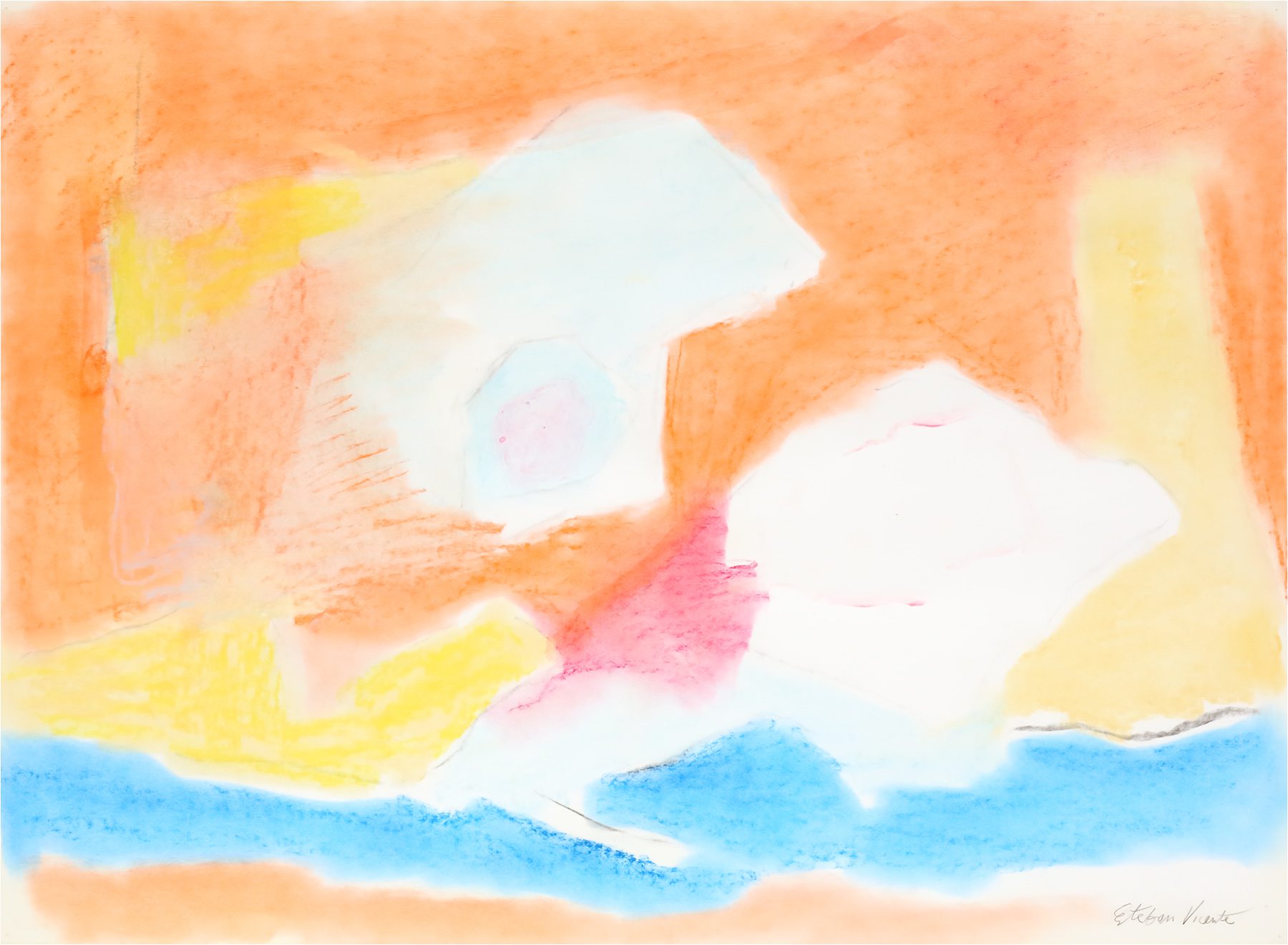

Untitled, s/f
Collage, pastel and charcoal on paper adhered to cardboard
50.2 x 50.8 cm
EV053
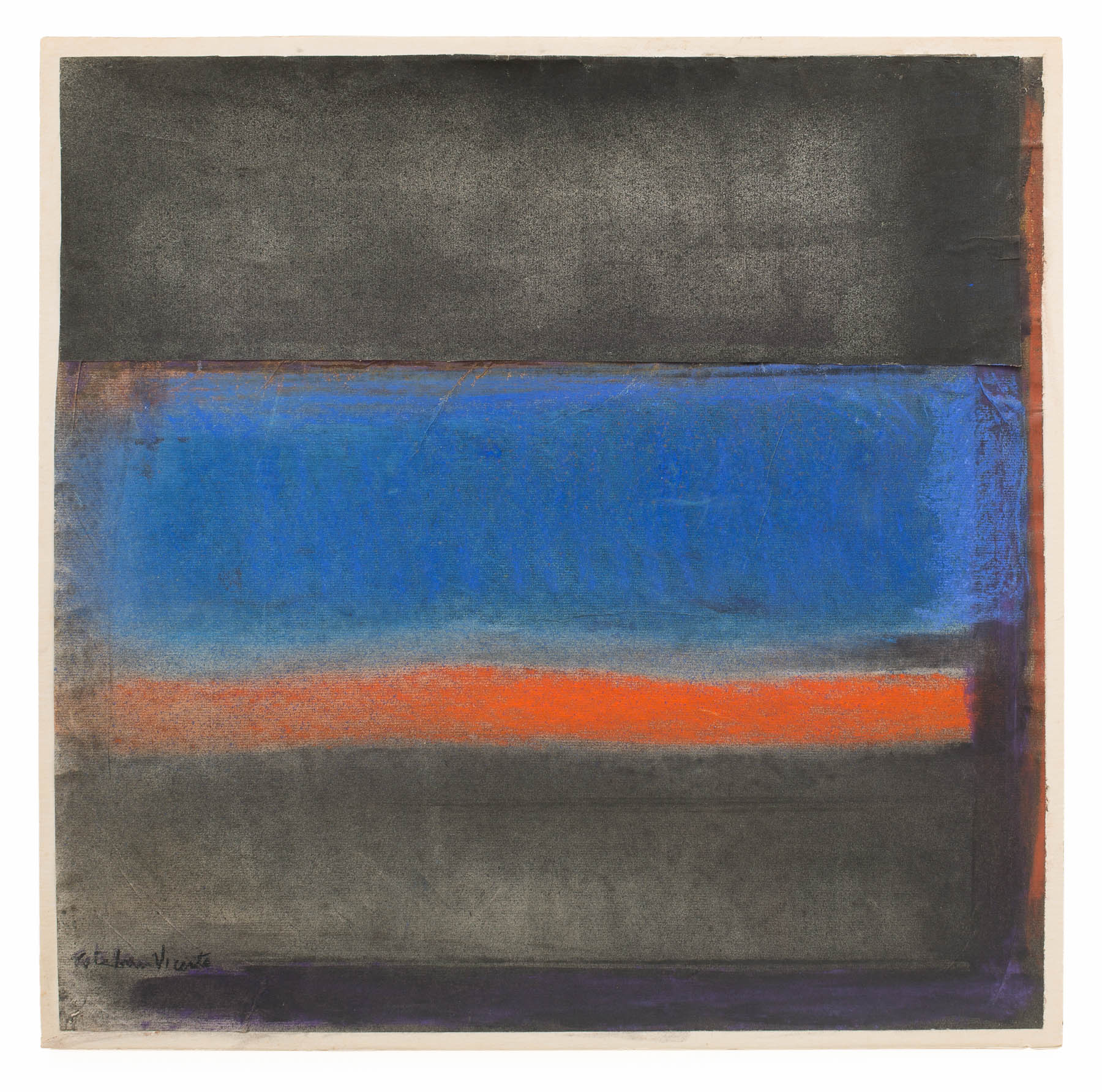

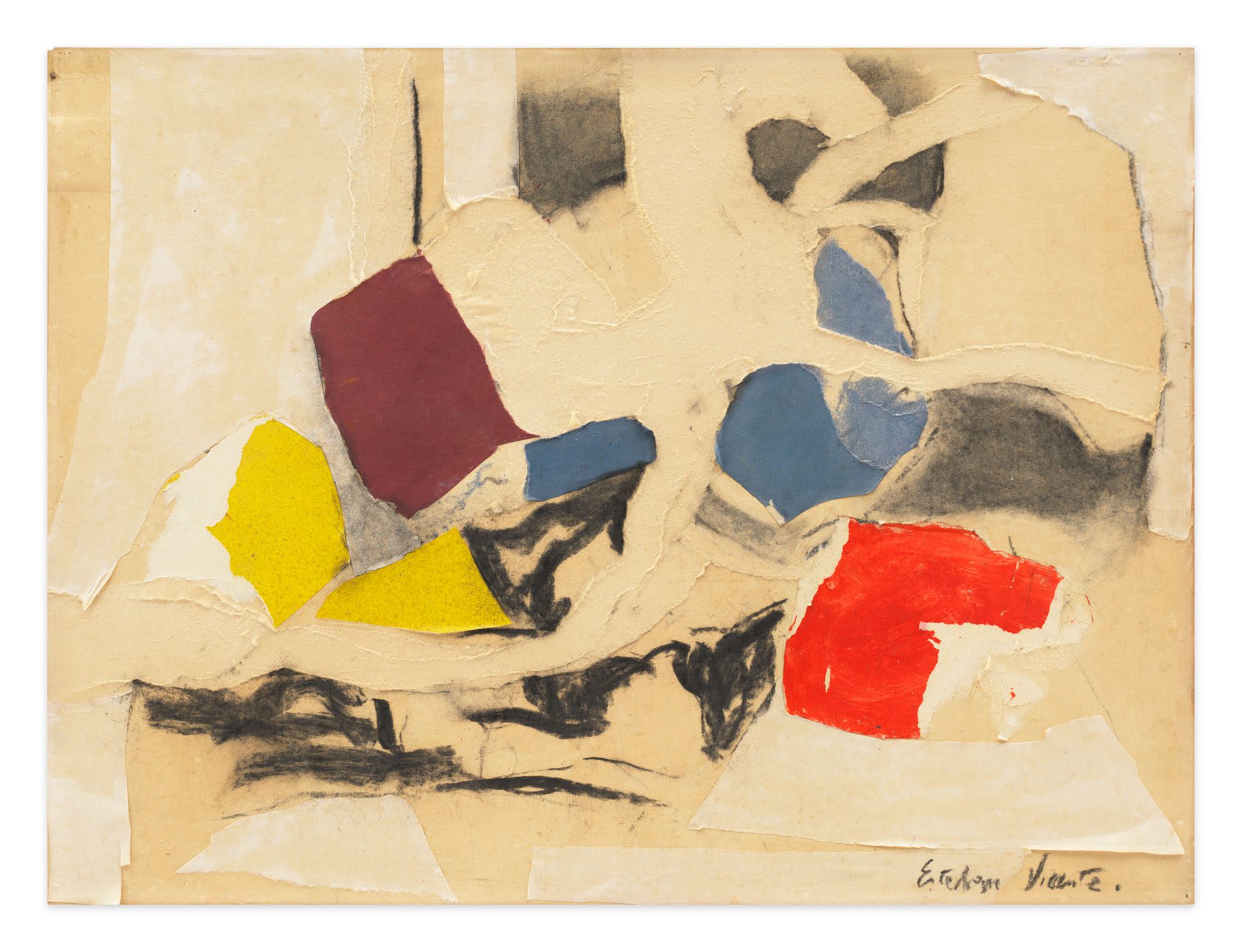

Untitled, 1978
Collage, charcoal and pastel on paper adhered to cardboard
63.5 x 49.5 cm
EV036
